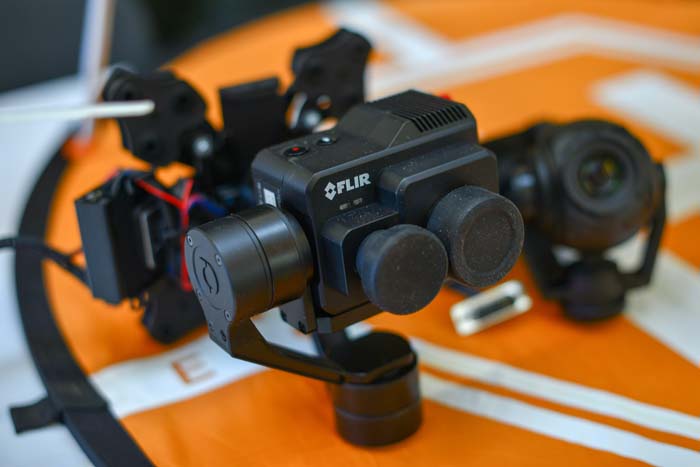New drone adds search and rescue capabilities
Published 4:18 pm Thursday, March 14, 2019

- The new unmanned aerial system will have the capability of using different camera systems, including a FLIR infrared camera.
The next person who gets lost or stranded in Umatilla County could get help from the SARbot.
Trending
Umatilla County Emergency Management’s new $25,000 unmanned aerial vehicle is its most technologically advanced yet, sporting capabilities such as infrared imaging and the ability to carry a few pounds of food or medical supplies to a stranded person waiting for rescue.
“I personally think this is going to be one of the premier drones in emergency management this side of the state, at least for a while,” emergency manager Tom Roberts said.
The county has used smaller, lesser-equipped drones in the past for search and rescue missions, fugitive hunts, and reconnaissance during disasters such as wildfires and hazardous material spills.
Trending
When the Tillicum Inn in Umatilla caught fire a little over a year ago, firefighters were able to scope out the situation on the roof using a UAV. Another time the gadget went into the air to help search for a missing 13-year-old girl near Tollgate.
The new, larger orange and black quadcopter will improve the county’s capabilities. Operators can bring up a feed from the regular camera (with extra zoom capabilities) or a forward-looking infrared (FLIR) camera providing thermal imaging. Roberts said the FLIR camera would have come in particularly handy recently when Morrow County deputies spent four hours searching for a crash victim who fled the scene, wading through knee-high snow and freezing temperatures in the dark.
Equipment such as the cameras are removable, so the emergency management department or sheriff’s deputies can interchange the technology with newer versions that come out or load up on additional accessories in the future.
“In terms of what we can do with it — no pun intended, but the sky’s the limit,” Roberts said.
During a search, the unmanned aerial vehicle can be automated to thoroughly and efficiently search every foot of an area with cliffs, ravines or other challenges for rescuers on foot. Images can be broadcast to multiple screens, from phones of rescuers to a laptop at a command site. And while rescuers once managed to fly two candy bars to stranded bear hunters using a drone, the SARbot will be able to carry a few pounds’ worth of food, medical supplies, rope, communications equipment or other items if needed.
The drone was custom-designed and built by Lawrence Dennis. He founded ATI, a Portland-based company that provides “bots” for everything from stringing power lines to agricultural mapping, in 2012.
The SARbot (SAR stands for “search and rescue”) was paid for by about $15,000 from Oregon’s Office of Emergency Management homeland security grant, and the Wildhorse Foundation pitched in about $10,000 more to cover the remaining cost and a few accessories.
Dennis said it could probably carry 10 or more pounds if needed, but he would recommend sticking to about three most of the time for optimal battery use and handling.
He said law enforcement agencies often come to him because commercial drones off the shelf just don’t provide what they need for missions. ATI’s practice of using a “configurable undercarriage” also helps UAVs last longer by requiring only one piece of the technology to be replaced when it’s outdated.
“It’s hard for people to keep up with the pace of how things go along,” he said. “After a year or two they would find their drone was not supported anymore.”
Five Umatilla County employees are trained to use the SARbot so far, something Dennis said is important. While someone driving a car for the first time might have a good idea of how components like the steering wheel and gear shift work, unmanned aerial vehicles are less familiar territory for most people.
A UAV is really only as good as its operator, Dennis said.
“A lot of people think the magic is in the drones, but it’s not,” he said.
Roberts said the county will continue to get people trained and licensed to operate the drone, and is looking for search and rescue volunteers who would be interested in getting trained as well.
Roberts debuted the new drone Wednesday afternoon at Blue Mountain Community College in Pendleton during a law enforcement-themed career fair. Students were drawn to the display of UAV technology Roberts had spread out, and asked questions about how easy the drones were to operate.









